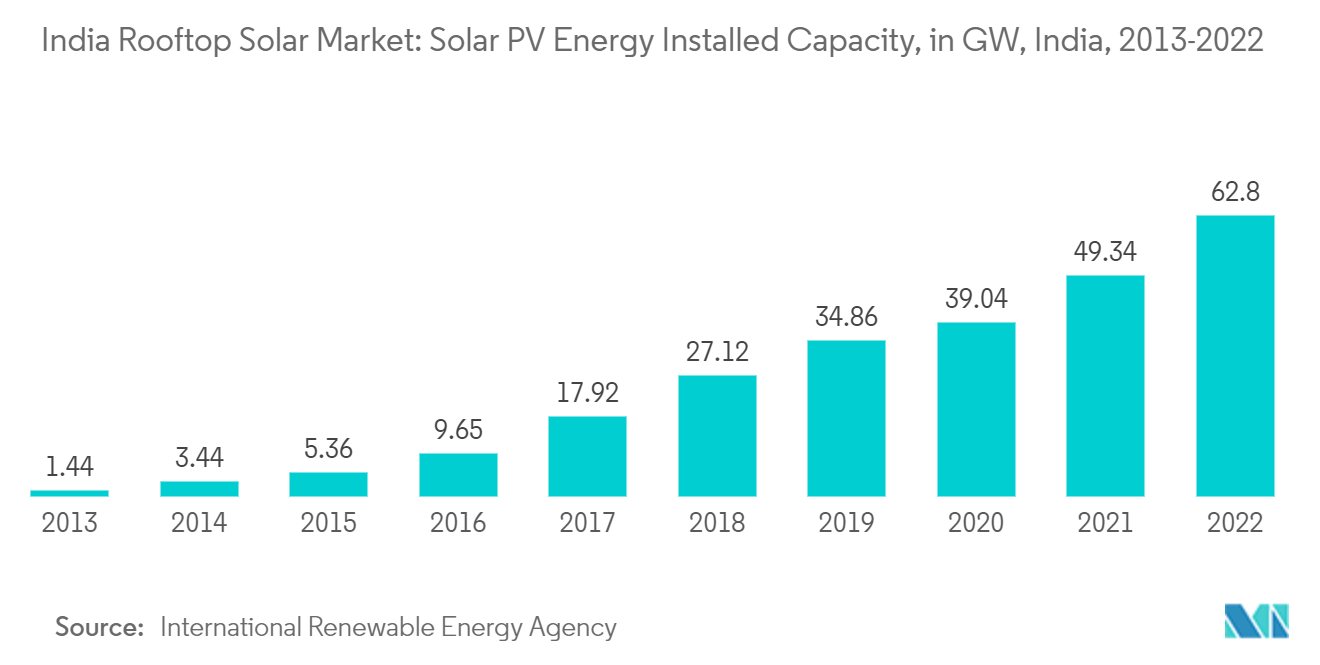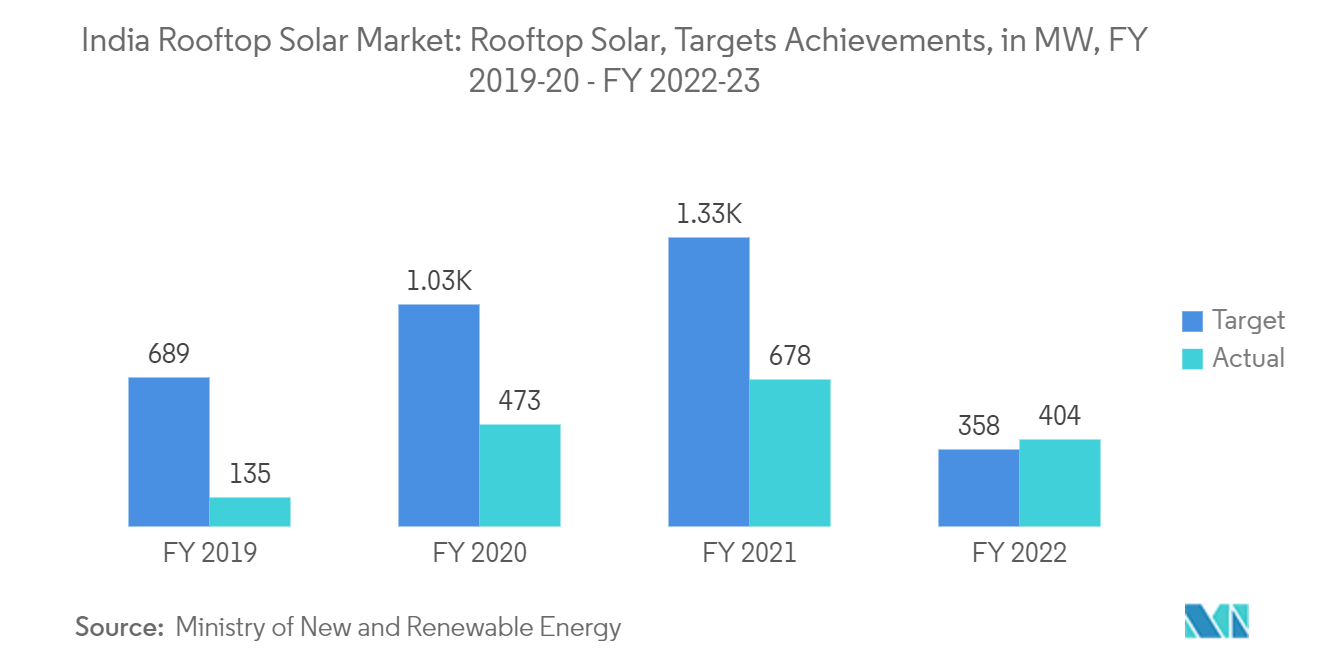Market Trends of India Rooftop Solar Industry
Industrial Sector to Dominate the Market
The industrial sector requires high electricity for daily operational activities. As per the Ministry of Statistics and Programme Implementation, the industrial sector consumed nearly 41% of the total electricity distributed in FY 2021. With growing numbers of industries, mostly likely the micro, small, and medium enterprises (MSME), electricity consumption in India is expected to have significant growth during the upcoming years.
Due to the rise of industrial activity in India, industry power demand may increase. As a result, rooftop solar installations would be robust options for enterprises to become self-reliant, which is expected to expand the rooftop solar market in India.
States such as Gujarat, Haryana, and Maharashtra exhibit attractiveness for rooftop solar installations as they offer feasible policies for net metering and easy subsidy-related processes. This facilitates rooftop solar installation by consumers of the Industrial segment in a more accessible manner.
The total installed solar PV energy capacity in 2022 was 62.80 GW, an increase of 27.4% from the previous year. It is expected to increase further owing to the rise in rooftop solar installations by various states in the coming months.
Due to lower Levelized tariffs of solar energy than grid-based tariffs in India, industrial consumers opt to consume electricity at a more competitive cost. Other factors, such as generation-based incentives, third-party power sale mechanisms, and preferential tariffs, as facilitated by the government, would enable the expansion of the rooftop solar market.
In January 2023, the Delhi government announced diving into the community solar rooftops. It would allow companies and organizations to generate electricity without access to rooftop space. Rajasthan Electronics and Instruments (REIL), a joint venture of the Rajasthan & Union governments, invited bids to commission 50MW of grid-connected rooftop & small ground-mounted solar, which creates an opportunity for industries in India to install rooftop projects.
Considering the above trends, the industrial segment may likely dominate the Indian rooftop solar market.

Government Emphasis Toward Renewable Energy Integration
The Indian government rolled out grid-connected rooftop solar programs to install about 40 GW capacity in 2022. As per the Ministry of New and Renewable Energy (MNRE) statistics, the Indian rooftop solar capacity increased by around 44.9% from September 2022 to July 2023. Different regulations by Indian states for rooftop solar and the distribution companies' resistance to letting go of industrial and commercial consumers to opt for rooftop solar projects have hindered capacity expansion.
Nevertheless, as per the MNRE annual reports published in 2022, the support from the government, such as Central Financial Assitance (CFA) of up to 40% of the benchmark cost, is facilitated to rooftop projects of up to three kilo-watts and 20% for systems beyond 3 kW to 10 kW in the residential sector. Similarly, for Group Housing Societies/Residential Welfare Associations (GHS/RWA), the CFA is limited to 20% for rooftop solar plants for up to 500 kW capacity. Such assistance is helpful in the uptake of the solar rooftop market in India.
The distribution companies also receive rooftop capacity targets or allocations from MNRE or state agencies annually. For instance, in June 2023, the South Bihar Power Distribution Company Limited (SBPDCL) announced a target to increase solar energy generation by up to 10 megawatts by December 2023 under a grid-connected rooftop solar scheme.
Likewise, in 2022, the Bangalore Electricity Supply Company Limited (BESCOM) received capacity allocations of 10 MW from MNRE and over a thousand applications from multiple customers to deploy rooftop solar systems. Such a scenario is expected to increase solar rooftop projects in India during the forecast period.
As of March 2023, the MNRE quoted that about 404 MW of rooftop solar capacity was installed against the target of 357.9 MW up to January 2023, a decline from 678 MW since the previous financial year.
In August 2023, the Maharashtra Electricity Regulatory Commission proposed amendments in regulations to increase the capping of net metering to 1 MW for solar rooftop projects. Usually, the net-metering applicability stands around 500 kW for rooftop solar plants in most Indian states as mandated by MNRE. The approval of proposed amendments might lead to an increase in the adoption of rooftop solar projects by large consumers. This might benefit the development of the solar rooftop market in India.
These initiatives are only a small part of the efforts made by the governments to increase rooftop solar PV usage in the country. These government incentives usually include subsidies, tax credits, grants and loan programs, and additional green credits. The Indian government keeps rolling out new fiscally attractive incentive schemes for residential, commercial, and industrial (C&I) solar PV systems. This is likely to drive the market studied during the forecast period.

